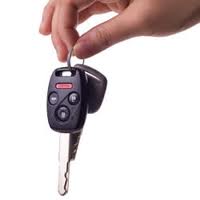Most drivers feel they could drive in their sleep, but if you replaced their standard gas pedal (on the right), with a left-foot accelerator, (which many with disabilities use), it becomes a whole new experience, takes much more concentration and brushing up on the old rules.
Even if you were an excellent driver before a disability, you are a newbie to adaptive driving. After taking a driver rehabilitation course and getting out on the road by yourself, you should not assume you can automatically drive safely in every condition.
Old rules still apply, like: “Don’t multitask!” That one is even more important today, with electronic toys like cell phones and iPods, so don’t fiddle with the radio, eat, drink or do anything else that takes your eyes off the road – even for a second. Such distractions are a major contributor to accidents, especially for seniors. That said; here are more tips on driving like your life depends on it.
- Adjust mirrors before you even start the engine and check the side and rear-view mirrors every 15 seconds while driving, especially if you have vision problems.
- A safe rule of distance between cars is for every 10 miles per hour of speed; leave at least one car length of space between your vehicle and the one ahead; more if your reaction time is slower than it once was.
- Double check blind spots before changing lanes. The blind spot on the right is larger than the left one, so give it more attention. Especially handy for those with decreased peripheral vision.
- Move your seat close enough to the steering wheel so your wrist can rest on top of the wheel with your arm outstretched and your back against the seat. This is the best position for changing lanes quickly, should you need to.
- Setting the air conditioning to a cooler temp helps to stay alert. If you tire easily, stop and do light exercise.
This mobility safety update has been brought to you by NMEDA – the National Mobility Equipment Dealers Association. Need some information on how to make your vehicle wheelchair accessible or upgraded with the latest and most convenient features? Contact a NMEDA dealer in your local area. Your local NMEDA member is a mobility equipment and accessibility expert!






